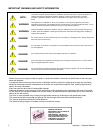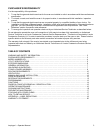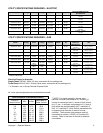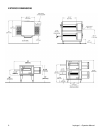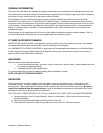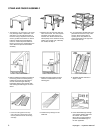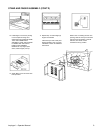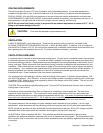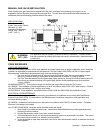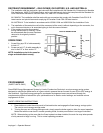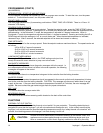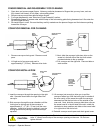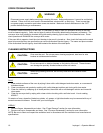Impinger I – Operator Manual
7
GENERAL INFORMATION
The instructions that follow are intended as a guide for preparing for the installation of the Impinger Conveyor Oven.
First and foremost, each crate should be examined before signing the Bill of Lading to report any visible damage by
the trucker in transit, and to account for the proper number of crates.
The Impinger
®
oven functions by directing high velocity streams of heated air directly on the food products.
Because air is the heat source, it is effective even on sensitive foods. Compared to conventional ovens and even
convection ovens, the cooking time of products in the Impinger
®
Conveyor ovens can be as much as two (2) to four
(4) times faster. Several factors may affect the cooking time of any special product such as: 1) oven temperature
setting, 2) conveyor speed, 3) position of columnating plate in oven, and 4) adjustments of the 2 baffles on the
conveyor openings.
We encourage you to experiment with the oven by trying different temperature settings and belt speeds. Also, try
to control the cooking of the product by re-arranging the optional columnating plates.
IF THERE IS APPARENT DAMAGE:
UNITED STATES AND CANADA: Arrangements should be made to file a claim against the carrier. As Interstate
Commerce Regulations require that the claim must be initiated by the consignee.
ALL SHIPMENTS TO OTHER COUNTRIES: Freight terms will be developed and extended on an individual basis.
Proper and secure storage facilities should be arranged for the oven(s) if necessary to protect it from outdoor or
damp conditions at all times before installation.
UNLOADING
When the oven arrives it should consist of:
1. A crate containing oven body, conveyor, fingers, crumb pans, and pan stops. (Some models may have
the conveyor packed separately.)
2. A package containing the stand and top.
It is recommended that you have a material-handling device available to unload.
NOTE: DO NOT LIFT EXCESSIVE WEIGHT!
UNCRATING
When you have all the crates unloaded, open the crates and remove the plastic covers. Inspect at once for
concealed damage. If anything appears to be damaged, contact the appropriate persons immediately to file a
damage claim. After completing this inspection, finish unpacking the oven and all other components. Be sure to
remove the cardboard from the plenum shroud. Move all components inside near the area where they will be
assembled in the order in which they will be assembled.
THE OVEN WILL CLEAR THROUGH A 30” (762 mm) DOORWAY BY USING THE FOLLOWING PROCEDURE:
A. Remove conveyor; see “Conveyor Removal” section for instructions. (Some units may have conveyor
packed separately.)
B. Remove thumb screws and baffle from the left side of the oven.
C. Place the left side on a four wheel moving dolly and it will clear a 30” (762 mm) doorway.




